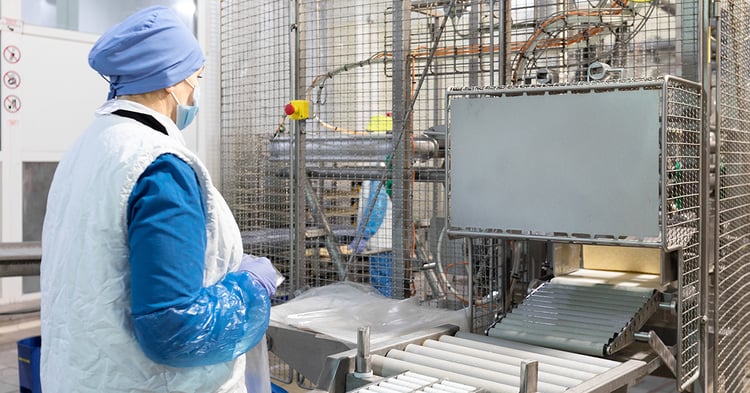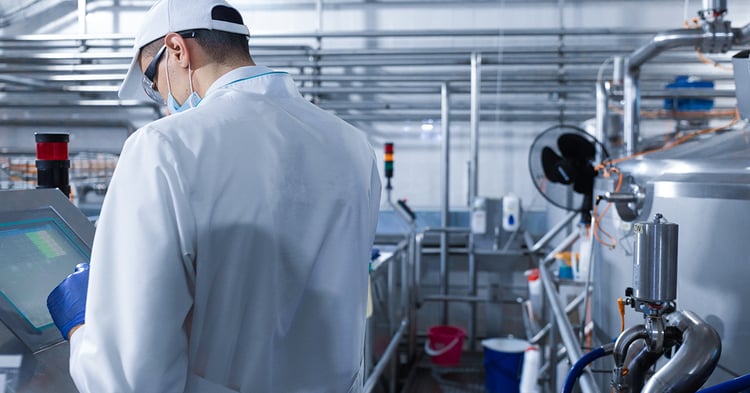![]()
Manufacturing Execution Systems (MES) have evolved significantly with the integration of technologies like the Internet of Things (IoT), artificial intelligence (AI), and cloud computing. These advancements are transforming how manufacturers optimize operations and make decisions. IoT-enabled MES gathers real-time data to streamline processes and predict maintenance needs. Cloud-based solutions offer scalability and cost efficiency, while AI and machine learning drive predictive analytics for smarter production. MES also plays a key role in improving sustainability by tracking energy usage and reducing environmental impact. As technology evolves, MES will continue to drive innovation and excellence in manufacturing.
Table of Content
- The Future of MES: Trends and Predictions in Manufacturing Technology
- Emerging Trends in MES and Manufacturing Technology
- The Evolution of Manufacturing Execution Systems
- AI and Machine Learning in MES: Predictive Analytics and Autonomous Operations
- AI and Predictive Maintenance in MES: Reducing Downtime
- Glossary
- Start your LiveTracking journey with our expert guide
Optimize Your Production with the Latest MES Technology – Get a Free Consultation Today!
The Future of MES: Trends and Predictions in Manufacturing Technology
Manufacturing Execution Systems (MES) have revolutionized the way manufacturing organizations monitor and control production processes. As technology evolves, so does the landscape of MES, paving the way for significant changes in manufacturing practices. This article explores the key trends shaping the future of MES, their implications for the industry, and the challenges that lie ahead in cybersecurity and workforce preparation.
Emerging Trends in MES and Manufacturing Technology
The landscape of manufacturing technology is continuously evolving, driven by advancements in digital transformation, automation, and data analytics. Emerging trends in MES reflect these changes, offering organizations the tools to optimize production and enhance operational efficiency.
One of the most significant trends is the integration of the Internet of Things (IoT) with MES. As machines and equipment become more interconnected, MES can leverage real-time data from sensors to improve decision-making, streamline processes, and predict maintenance needs. IoT-enabled MES supports a transparent production environment, allowing operators to visualize performance metrics and identify bottlenecks quickly.
This connectivity not only enhances operational insights but also fosters a culture of continuous improvement, as teams can analyze data trends over time and implement proactive measures to enhance productivity.
Another trend is the growing emphasis on cloud-based MES solutions. Cloud technology provides scalability, flexibility, and cost-effectiveness, making it easier for manufacturing companies to implement MES without significant upfront investment. This shift also facilitates collaboration and data sharing across different facilities and stakeholders in the supply chain. Furthermore, cloud-based systems can be updated seamlessly, ensuring that organizations are always equipped with the latest features and security protocols, which is crucial in an industry where data integrity and uptime are paramount.
Additionally, the rise of artificial intelligence (AI) and machine learning (ML) is transforming the capabilities of MES. By harnessing AI algorithms, manufacturers can analyze vast amounts of data to uncover patterns and insights that were previously unattainable. This predictive analytics capability allows for smarter forecasting, inventory management, and quality control, ultimately leading to reduced waste and increased profitability. As AI continues to evolve, its integration with MES will likely lead to more autonomous manufacturing processes, where systems can self-optimize based on real-time conditions.
Moreover, the focus on sustainability and energy efficiency is becoming increasingly prominent in manufacturing technology. Companies are now seeking MES solutions that not only optimize production but also minimize environmental impact. By incorporating sustainability metrics into MES, organizations can track energy consumption, waste generation, and resource utilization, enabling them to make informed decisions that align with corporate social responsibility goals. This trend not only meets regulatory requirements but also appeals to consumers who are increasingly favoring environmentally conscious brands.
The Evolution of Manufacturing Execution Systems
The development of manufacturing execution systems has been a gradual process, starting from traditional methods of monitoring production to advanced digital platforms. Initially, MES focused on real-time data collection and process control. Over the years, the complexity of tasks managed by MES has expanded, integrating functions such as production scheduling, quality control, and inventory management.
The transition from on-premise to cloud-based solutions marks a significant evolution in MES. In the past, companies relied heavily on local servers and hardware, which limited their ability to scale operations effectively. Today, modern MES platforms are built with technologies that enable enterprise-wide visibility and control, improving responsiveness and efficiency. This shift not only enhances operational agility but also facilitates seamless collaboration across different departments and locations, empowering teams to make informed decisions based on real-time data.
Furthermore, the integration of Artificial Intelligence (AI) into MES has opened new avenues for predictive maintenance and enhanced decision-making capabilities. AI algorithms can analyze historical data to forecast equipment failures, allowing organizations to schedule maintenance proactively rather than reactively. This predictive approach not only minimizes downtime but also optimizes resource allocation, ultimately leading to cost savings and improved productivity. Additionally, machine learning models can continuously learn from new data, refining their predictions and adapting to changing manufacturing environments, which is crucial in today's fast-paced industrial landscape.
Moreover, the rise of the Internet of Things (IoT) has further transformed MES by enabling the connection of various devices and sensors throughout the manufacturing process. This interconnectedness allows for more granular data collection and analysis, providing insights that were previously unattainable. For instance, real-time monitoring of machinery performance can lead to immediate adjustments in production processes, enhancing overall efficiency and product quality. As IoT technology continues to evolve, the potential for MES to drive innovation and operational excellence in manufacturing becomes even more pronounced, paving the way for smarter factories that leverage data-driven strategies to stay competitive in a global market.
AI and Machine Learning in MES: Predictive Analytics and Autonomous Operations
The integration of Artificial Intelligence (AI) and Machine Learning (ML) in Manufacturing Execution Systems (MES) is revolutionizing the manufacturing industry, driving predictive analytics and enabling more autonomous operations. These technologies provide manufacturers with the tools to process large amounts of data, uncover patterns, and make real-time decisions that were once unimaginable.
Predictive analytics, powered by AI and ML, allows manufacturers to forecast equipment failures and optimize maintenance schedules. Instead of reactive maintenance, where machines are repaired after a breakdown, predictive maintenance identifies potential issues before they occur. This reduces downtime, minimizes repair costs, and ensures smoother production processes. Machine learning models continuously learn from new data, refining their predictions to become more accurate over time. As the models improve, manufacturers can expect even greater operational efficiency and cost savings.
AI and ML also enable autonomous operations within MES. These systems can self-optimize, adjusting production processes based on real-time conditions. For example, an AI-driven MES can monitor equipment performance, identify inefficiencies, and make necessary adjustments without human intervention. This level of automation enhances productivity, reduces waste, and improves overall quality control.
As the demand for data-driven decision-making grows, the role of AI and ML in MES will continue to expand. Manufacturers that leverage these technologies can not only stay competitive but also lead the charge in the era of Industry 4.0. With predictive analytics and autonomous operations at the core of their strategy, companies can achieve smarter manufacturing, better resource utilization, and enhanced profitability, all while minimizing risks associated with equipment failure and production inefficiencies.
AI and Predictive Maintenance in MES: Reducing Downtime
Artificial Intelligence (AI) is revolutionizing the manufacturing industry, particularly through its integration into Manufacturing Execution Systems (MES) to enhance predictive maintenance capabilities. Predictive maintenance involves using AI algorithms and data analysis to foresee equipment failures before they happen, allowing manufacturers to address potential issues before they cause costly downtime.
Traditionally, maintenance has been either reactive—fixing machines only after they break down—or preventive, where equipment is serviced at regular intervals regardless of its actual condition. AI-driven predictive maintenance takes this a step further by continuously analyzing data collected from IoT-enabled sensors within the machinery. This real-time data provides insights into the health of equipment, identifying signs of wear and tear, temperature fluctuations, and other factors that indicate impending failure.
With AI's ability to process vast amounts of data, MES systems can now detect patterns that human operators might miss. For example, AI can recognize subtle shifts in machine performance that suggest the need for maintenance long before a malfunction occurs. This proactive approach reduces unplanned downtime, increases equipment lifespan, and optimizes resource allocation by ensuring that maintenance efforts are targeted where and when they are needed most.
Moreover, predictive maintenance powered by AI helps manufacturers streamline operations by minimizing disruptions in the production process. The reduced downtime not only saves costs but also improves overall efficiency and productivity. As AI technology continues to advance, MES systems will become even more adept at self-optimizing, enabling factories to run smoothly with minimal human intervention.
Incorporating AI and predictive maintenance into MES is a game-changer for the manufacturing industry, providing a smarter, more efficient way to manage machinery and reduce downtime.
Unlock the Future of Manufacturing with AI-Powered MES – Start Your Free Demo Now!
Glossary
- MES (Manufacturing Execution Systems): A system that monitors and controls production processes in manufacturing environments.
- IoT (Internet of Things): The network of physical devices that connect and exchange data using sensors and software.
- Cloud-Based Solutions: Technologies that store data and run applications on remote servers accessed via the internet.
- AI (Artificial Intelligence): Simulation of human intelligence in machines, allowing them to learn, reason, and make decisions.
- Machine Learning (ML): A subset of AI where machines learn from data to make predictions or decisions without being explicitly programmed.
- Predictive Maintenance: A strategy that uses data and AI to predict when machinery will need maintenance before it fails.
- Sustainability: Efforts to minimize environmental impact through energy efficiency and waste reduction in manufacturing processes.


